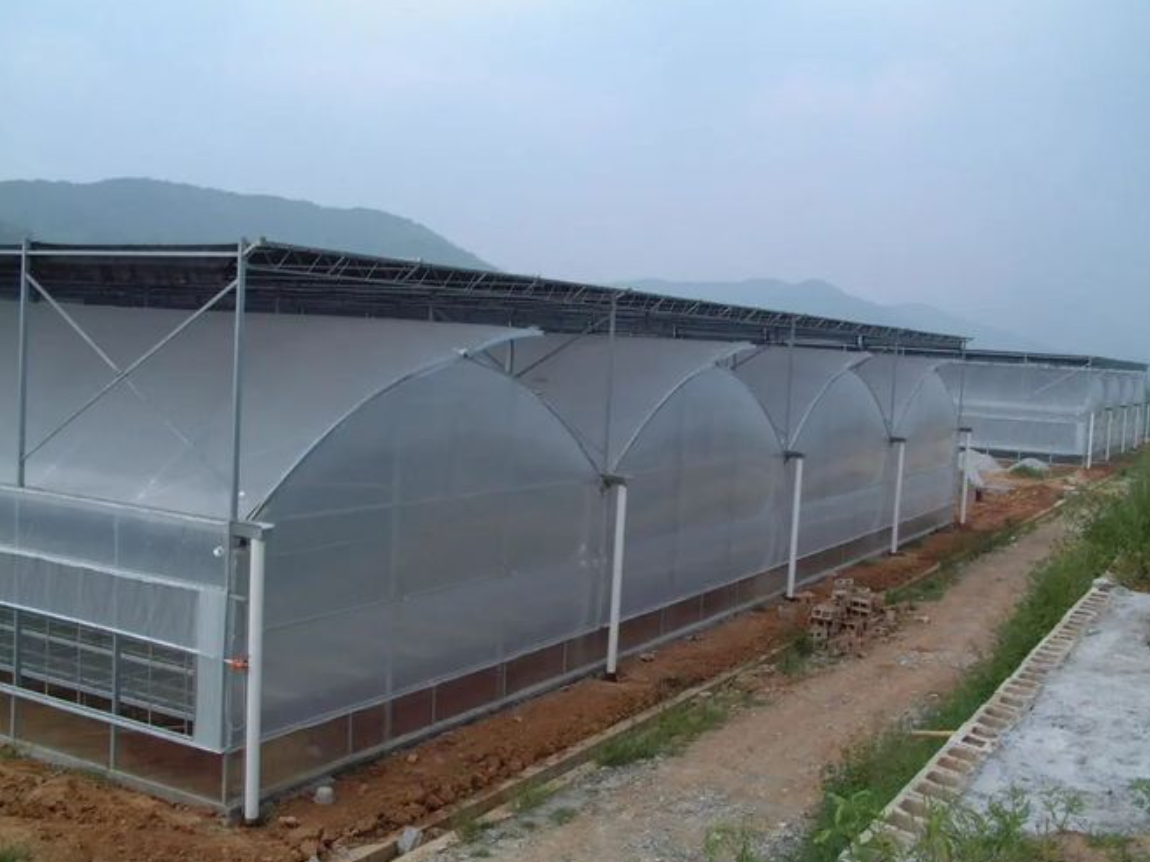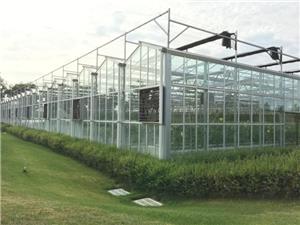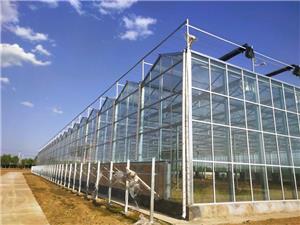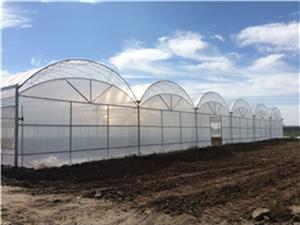Comparison of Advantages and Disadvantages of Greenhouse Covering Materials
Modern agricultural production cannot do without greenhouses. Greenhouses not only can protect against natural disasters, resist drought and floods, but also can advance or delay cultivation, extend the growth period of crops, achieving the goals of early maturity, late maturity, increased yield and stable production. They are highly favored greenhouse film by farmers. Due to the greenhouse film different climates greenhouse film and applications in various regions, the specifications of greenhouses also vary. Among them, the most important thing is undoubtedly the covering material. Today, let's talk about the most common types of covering materials for greenhouses, and elaborate on their greenhouse film advantages and disadvantages. We can also try to greenhouse film help friends make more reasonable choices of applicable covering materials for greenhouses.
Soft film material
I. PE
Advantages of polyethylene film (PE): White and semi-transparent, with greenhouse film a thickness of 0.1 to 0.2 mm, wide in width, the widest can reach 18 meters. Resistant to acids, alkalis and salts; does not easily produce toxic gases, safe for crops; does not easily stick to dust, has good light transmittance; low density (0.92 g/cm³), thus the covering cost is low.
Disadvantages:
The infrared transmission rate is very high (up to 80%), but the insulation performance is poor. On clear and windless early spring nights, an "inversion" phenomenon may occur in the greenhouse, causing damage to the crops.
2. Poor strength, poor resilience, and prone to tearing.
II. PVC
Advantages of polyvinyl chloride film (PVC): Colorless and greenhouse film transparent, high strength, tensile strength up to 27.5 MPa. The infrared transmission greenhouse film rate is relatively low (20%). It has good insulation properties and is resistant to acids, alkalis, and salts. Applying pesticides greenhouse film and fertilizers on it will not cause deterioration easily.
Disadvantages:
It is prone to accumulate dust, resulting in a significant decline in light transmittance. The light transmittance decreases rapidly. It is not suitable greenhouse film for greenhouse filmcontinuous summer cover cultivation.
2. The ventilation and moisture permeability is low, and the passage of toxic gases is limited. In a greenhouse under high-temperature conditions, toxic gases will be produced, causing poisoning to the crops. At the same time, a high-temperature and high-humidity environment will be created inside the greenhouse, resulting in severe crop diseases. Polyvinyl chloride (PVC) film has a higher density (1.4g/cm³), and the coverage area per unit weight of the film is smaller, which leads to a higher coverage cost. For the same area of greenhouse, the coverage cost of PVC film is approximately 50% higher than that of PE film.
III. Functional Composite Membrane greenhouse film
Longevity film: To achieve long-lasting properties, it is necessary to use heavy packaging grade resin with melt flow rate (MFR) ranging from 0.3 to 0.8, combined with highly effective hindered amine light stabilizers. For PVC longevity films, the use of UV absorbers provides stronger protection for the film.
2. The drip retention period of non-drip PE film is generally only 2 to 4 months, PVC non-drip film lasts for 4 to 6 months, and PE-EVA film lasts about 8 months. By using non-ionic surfactants containing halogens, the anti-drip performance of the non-drip film is excellent, and the drip retention period can reach 1 to 5 years, basically synchronizing with the anti-aging effect. greenhouse film
3. Composite functional film: Multi-layer co-extruded PE/EVA/EVA. Its infrared barrier rate is approximately 50%. Due to its weak polarity, it has good compatibility with anti-drip agents and insulation agents, and has a long anti-drip retention period. The weather resistance of the outer PE resin and the insulation and anti-drip properties of the inner EVA resin. The PO series film is also a PE/EVA composite film. It has a small elongation rate, high strength, and can be directly incinerated after use without generating harmful gases.
4. Colored film: The wavelengths of visible light (400 - 700 nanometers) that play a dominant role in photosynthesis are known as photosynthetically active radiation. Among these, the blue-violet light (400 - 510 nanometers) and the red-orange light (610 - 720 nanometers) have the greatest impact on photosynthesis, while green light has the least effect.
IV. PO Film
"PO" is the abbreviation of the English word "polyolefin", which in Chinese means "polyethylene" or "polypropylene". It usually refers to the greenhouse film polymers formed by the polymerization of ethylene, propylene or higher alkenes.
High light transmittance of over 92% (decreased by more than 10 microns in thickness).
2. Anti-fog droplets: Utilizing a highly clear plastic for greenhouse advanced coating greenhouse film technology, it can continuously prevent fogging and ensure the lifespan of droplets is the same clear plastic for greenhouse as that of the membrane body.
3. Durability against puncture - Modified metal materials are added.
4. Dust-proof treatment: clear plastic for greenhouse The side facing outward is coated with a nano layer without electrostatic treatment. Moreover, the PO film itself has few impurities, resulting in less static electricity. This significantly reduces the dust absorption capacity. Aftergreenhouse film being washed by strong winds and rain, it remains as clean as new.
5. Anti-aging: Under the influence of polyolefins and greenhouse film metallocenes, its characteristic is long-lasting anti-aging.
6. Insulation performance Maintain the temperature inside the greenhouse greenhouse film
7. High tear resistance. In terms of modified polymer technology, its durability exceeds that of other membranes. After hanging, its elasticity is extremely low. Even when stretched from both the horizontal and vertical directions, only the white insulation layer can be seen without any breakage.
8. Environmentally friendly, with no toxic substances causing pollution.
F-clean
Polyvinyl fluoride film (PVF) is a rigid film, with a thickness ranging from 0.06 to 0.1 millimeters.
Advantages: 1. High mechanical strength 2. Resistant to aging, it is currently the film with the longest service life, capable of continuous coverage for 15 to 20 years. 3. High light transmittance of over 93%, with almost no attenuation. 4. Resistant to dust on the surface 5. Anti-fog and anti-drip 6. No moss growth.
Disadvantages: 1. Since fluorine is inherently toxic, during the manufacturing process of polyvinyl fluoride films, fluorine needs to be sandwiched in the middle layer to prevent environmental pollution during use. After use, it must be collected by the manufacturer and undergo specialized treatment. 2. Currently, the widest width available is only about 2.6 meters.
F-CLEAN is a soft glass covering film produced by the Asahi Shoji Company in Japan. It is increasingly being used as a top cover for greenhouses.
Glass
Advantages:
Excellent light transmission performance and high light retention rate.
2. Excellent insulation clear plastic for greenhouse performance.
3. Due to its extremely low ultraviolet transmission rate, glass has excellent aging resistance and a long service life.
4. Low coefficient of thermal expansion and contraction, and reliable structural coefficient.
Disadvantages: The glass has a large specific weight (2500 kg/m3), which imposes strict requirements on the foundation and framework of the greenhouse. The initial cost, maintenance cost, operation cost, and depreciation cost are high; the impact resistance is low, and it is fragile; the insulation performance is poor. Currently, many large cities no longer encourage the construction of glass greenhouses.
PC board
Polycarbonate sheet (PC) is one of the most greenhouse film advanced polymers currently used in plastic applications. 1. It has high mechanical strength and excellent clear plastic for greenhouse impact resistance. 2. It has good dimensional stability and good heat resistance, and can be used for a long time at -60 to 120℃. The heat deformation temperature is greater clear plastic for greenhouse than 310℃, it is a self-extinguishing resin with low flammability, low polarity, low water absorption rate, good light stability, clear plastic for greenhouseand good weather resistance. 3. Its service life can last up to 10 years. 4. Its heat insulation performance is extremely high, with a heat transfer coefficient that can be reduced to 1.6 to 2.2 W/m2℃, clear plastic for greenhouse which clear plastic for greenhouse is 30% to 60% more energy-efficient than glass greenhouses.
There are mainly three types: flat plates, greenhouse film wave plates and multi-layer hollow plates. The thickness of the clear plastic for greenhouse flat plates is 0.7 to 1.2 mm; the wave plates (wavy-shaped plates) provide relatively uniform lighting inside the greenhouse, with a slight increase in average light greenhouse film transmittance; double-layer or triple-layer polycarbonate hollow plates have a thickness of 3 to 16 mm. Disadvantages: The surface is prone to dust accumulation, the light transmittance clear plastic for greenhousedecays rapidly, the lifespan of the anti-drip function is short. The initial investment price is high.




